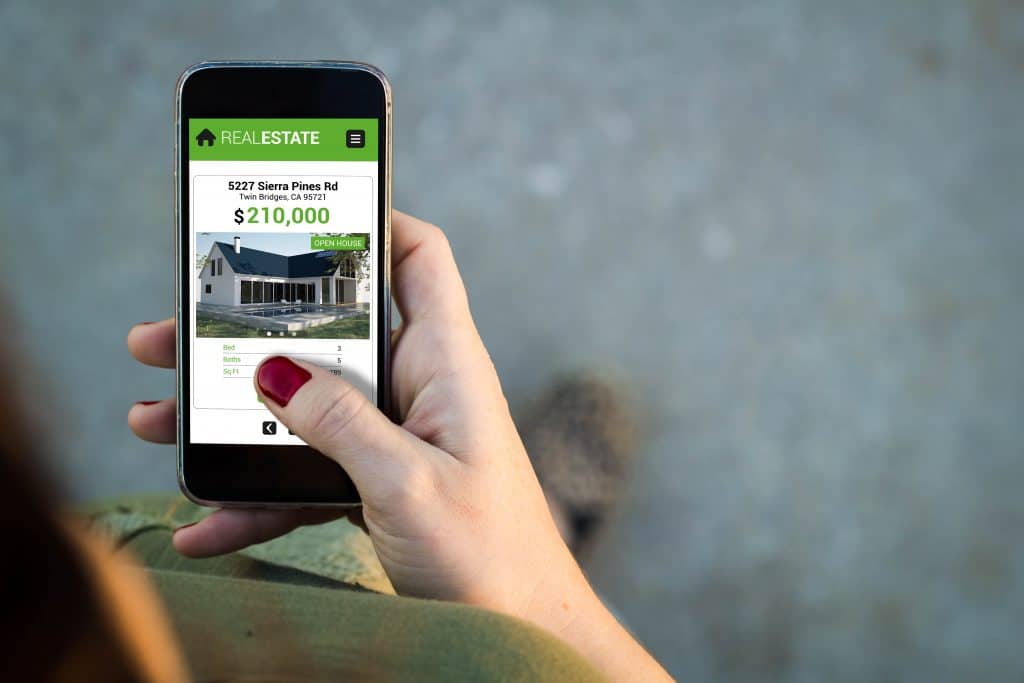As the housing market has improved, so has another aspect of real estate: the tech tools available to help you sell your home.

“Before the recession, agents were still marketing to other agents,” says Brian Balduf, co-founder and CEO of VHT Studios, which provides digital marketing services that include professional photography and video for real estate companies. “Now you have to market directly to consumers. … With the market coming back, you’re seeking all kinds of new apps and technologies.”
According to data from the National Association of Realtors, 89 percent of buyers use online tools in their home searches. Rather than waiting for agents to send them listings, they go online and tell the agents which homes they’d like to see. That makes what appears online even more important.
“First impressions are huge, especially online,” says Adam Briley, leader of the Briley Homes team at Berkshire Hathaway HomeServices Ambassador Real Estate in Omaha, Nebraska.
With so much quality media online, the bar is high for real estate listings photos, videos and other material to make that impression, especially with younger homebuyers.
“Real estate is such a visual product,” says Balduf, who points out that websites such as Pinterest and Houzz are boosting expectations for home photos and videos online. “If the listing doesn’t have strong visuals … skip skip, skip,” he adds. Younger buyers don’t expect anything less than the best online, so Balduf says, “the days of just having a crummy photo in the MLS are over.”
Among the tools that would-be homebuyers are using to scan their options before leaving their couches are professional photos, floor plans, 3-D walk-throughs and video.
What works is “any method of marketing the home that allows people to create an emotional connection and way to see the home,” says Alyssa Hellman, Go leader at Better Homes and Gardens Real Estate Go Realty in Cary, North Carolina.
Not all agents use the same tools, so a prospective seller’s interview with a potential listing agent should address specific marketing tools. Will there be professional photos? What about a floor plan or video? Exactly what is appropriate may depend on the home and the market, but it’s a discussion that’s important to have before you choose a listing agent.

“Online marketing is the most important aspect of getting a home sold these days,” says Karen Krupsaw, vice president of real estate operations for Redfin, a national real estate brokerage that has made the online experience a priority. “I do think that’s the critical component.”
You also want to make sure your agent puts your home on all the major real estate portals, including Realtor.com, Zillow and Trulia, because that’s where the buyers are. Plus, they should put the home up on the multiple listing service, the agent’s own website and social media. “Marketing on the portals is more important than ever,” Hellman says.
Tech products also help agents market their services, since sellers want to choose the agent who will present their listings best. Last year, the Brileys hired a local production company to create a nearly five-minute video showcasing their team and its approach to clients. They also created a 76-page glossy magazine. They send both to prospective clients in advance of their listing meetings, with the idea that they are selling themselves ahead of time and just need to discuss the home in the meeting.
“It was getting stagnant,” Adam Briley says. “We didn’t have the wow factor.”

Here are 12 tech tools you and your agent may use to sell your home.
Professional photos. Gone are the days when a few cellphone snapshots were adequate for a real estate listing. Buyers are searching online with tablets, phones and computers that allow them to see in high resolution. They want photos of every room. Balduf estimates that 15 to 20 percent of listings include professional photography, but the number is closer to 40 percent in Chicago. “That raises the bar for everybody else,” he says.
Maps. Maps on agents’ websites, the real estate portals, local property appraisers’ websites and Google Earth all enable buyers to see what’s around a home they’re considering, whether it’s convenient shops and services or an eyesore.
Easy-to-use search tools. Many buyers use Zillow, Trulia, Redfin, Realtor.com or other portals to find the homes they want to see. But some brokerages may provide even more customizable tools, allowing you to search by amenities, draw geographic borders or otherwise pinpoint your search. Better Homes and Gardens Real Estate, for example, lets customers search by commute time or school district.

Drone photography. Drones are being used by more companies to take aerial photos of large properties and more expensive homes with views.
Floor plans and 3-D floor plans. Buyers like to know how a home’s rooms are connected. One way to do that is with a floor plan. VHT makes its floor plans interactive; if you click on the kitchen, you’re taken to the kitchen photos, for example. Redfin uses 3-D walk-through floor plans on all its listings in selected markets. “We find that more eyes on the walk-through means more interest in the home,” Krupsaw says.
3-D immersive video tours. It’s now possible to “walk through” a home using immersive video, like that used in video games, wearing 3-D glasses and looking at a big screen.
Video. Today’s real estate videos go beyond the virtual tours of empty homes that were once common but are now less popular. Instead, the videos include narration, music and scenes of people enjoying the features of the property. “I think video has become a huge, huge tool for buyers, sellers and agents,” Hellman says. “Video really allows homebuyers to create that emotional connection.”
Electronic documents. Some companies allow nearly all documents to be viewed and signed online or in a phone app. “I think we’re past the age of buyers and sellers sitting at the closing table with pages of documents,” Hellman says. Buyers want to “open up an app on my phone and get this done.”
Online checklists and timetables. Redfin provides a home seller dashboard that keeps sellers updated on traffic to their property and next steps they need to take. “People are anxious,” Krupsaw says. “They want to know what’s going on, what’s my agent doing for me and how many people are really interested in my property.”
Virtual home staging. Bringing in furniture to improve the look of an empty home can be prohibitively expensive. Working around an owner’s outdated décor also can be challenging. Virtual staging, where furniture and décor are added to photos of the empty house, allows buyers to see photos of the home online with furniture and different colors or flooring.
Social media. Adam Briley says his team finds Facebook to be a powerful marketing tool, and his agents encourage sellers to share their listings with friends. “Social media is actually huge for us,” he says. Of the 105 homes the team has sold this year, he estimates that 25 were sold through Facebook. “Anyone who’s not getting on social media and using it to their advantage is going to be behind the times,” he says.
Apps. Younger buyers especially want to look at listings on their smartphones, and apps that make it easier for them to do. All the major portals have apps, as do some real estate brokerages. “It’s important to pay attention to your home’s Web appeal, especially on mobile,” says Amy Bohutinsky, chief marketing officer at Zillow. “With so many buyers searching for homes on a mobile device, sellers need to make sure their listing looks great on a smartphone. You should have lots and lots of photos, using a high-resolution camera, because that’s what looks best on mobile.”

